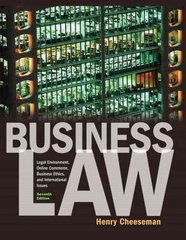Question
1)Neoliberal economic policies generally seek to: a)Raise taxes b)Cut government spending on all functions c)Cut government spending on all functions except military and police d)Increase
1)Neoliberal economic policies generally seek to:
a)Raise taxes
b)Cut government spending on all functions
c)Cut government spending on all functions except military and police
d)Increase regulation of the private market
2) In periods of rapid inflation, which of the following entities is most harmed?
a) A unionized worker who receives a cost of living adjustment (COLA) each year
b) A bank that receives most of its income from interest payments on loans that it has made
c) A household that is paying off a 30-year mortgage loan
d) A college graduate who is working to pay off a large student loan debt
3)Imagine that the rate of inflation has been 10% per year for a number of years. The central bank then introduces a 'tight' monetary policy and the rate of inflation comes down to 5% per year. This reduction is an example of:
a)Austerity
b)Deflation
c)Fiscal stimulus
d)Disinflation
4)The rate of interest that you are paying on a mortgage loan is 3 percent per year. The rate of inflation is 4 percent per year. The real rate of interest that you are paying is therefore:
a)3 percent
b)7 percent
c)1 percent
d)negative 1 percent
5)An increase in the general level of prices (inflation) will cause which of the following?
a)An increase in the real wage
b)A decrease in the nominal wage
c)An increase in the real interest rate
d)A decrease in the real wage
6)Why is deflation generally undesirable, from the perspective of the economy as a whole?
a)It encourages consumers to buy deflationary goods.
b)It is likely to lead to a reduction in aggregate demand in the short term.
c)It disadvantages lenders.
d)It reduces the value of debts.
7)Which of the following is most likely to cause an increase in the inflation rate?
a)an increase in the unemployment rate
b)an increase in the outsourcing of jobs to other countries
c)a reduction in the percentage of workers who are in labor unions
d)an increase in the minimum wage
8)The decline in the US Job Quality Index over the last 30 years indicates that:
a)Workers now have more bargaining power than they did 30 years ago.
b)The is less risk of high inflation now than there was 30 years ago.
c)There is more risk of high inflation now than there was 30 years ago.
d)Unemployment is lower now than it was 30 years ago.
9)An increase in the policy rate reduces aggregate demand because:
a)It makes it harder for consumers to borrow money.
b)It increases the income earned by savers.
c)It reduces the size of the multiplier.
d)It forces banks to lower their market interest rates.
10)If the central bank wants to lower the unemployment rate, it would:
a)lower its inflation target
b)create fiscal stimulus
c)lower its policy rate
d)increase market interest rates
Step by Step Solution
There are 3 Steps involved in it
Step: 1

Get Instant Access to Expert-Tailored Solutions
See step-by-step solutions with expert insights and AI powered tools for academic success
Step: 2

Step: 3

Ace Your Homework with AI
Get the answers you need in no time with our AI-driven, step-by-step assistance
Get Started


